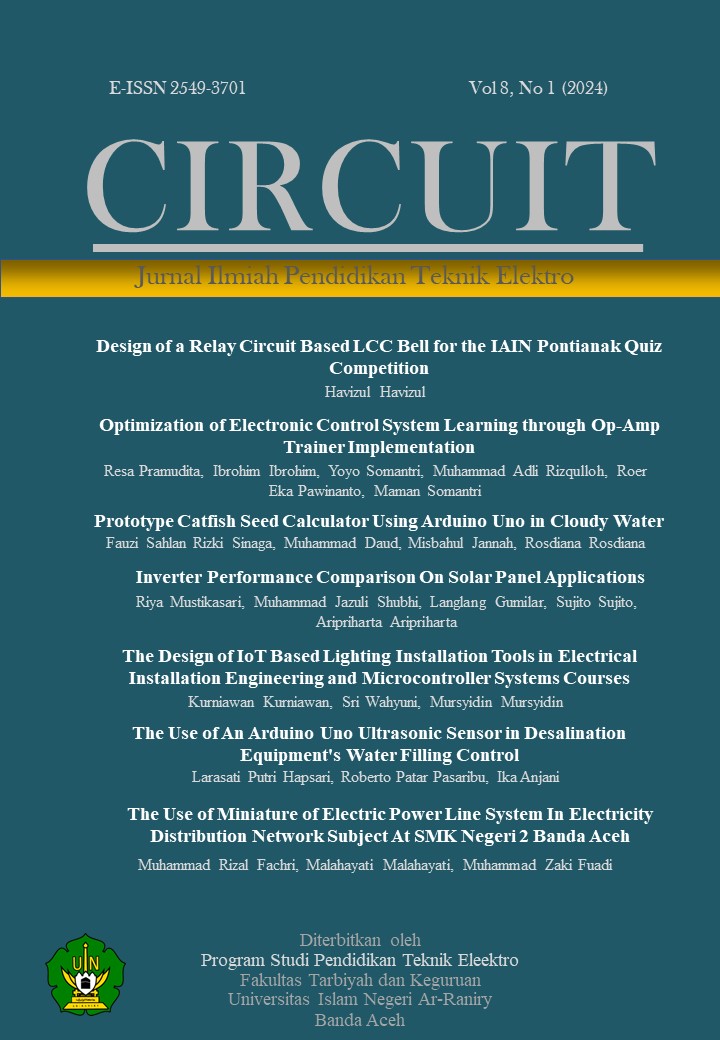Development of PLTS Trainers as Learning Media in the Energy Conversion Laboratory
DOI:
https://doi.org/10.22373/crc.v8i1.19674Keywords:
PLTS, Trainer, Learning Media.Abstract
Enhancing the quality of learning is worthy by the availability of PLTS trainers. This work intends to build and create PLTS trainers as learning material for renewable energy generation. The preparation of this study was divided into two stages: first, a PLTS media trainer kit and a practical training module that functioned as a handbook for using the media trainer were created. The ADDIE method is used as the development model for the practical guiding module and media trainer. Based on the data analysis findings show that the 10Wp solar module can provide a maximum energy of 5.11Wp for 11 hours when charging a 7.5Ah battery. With a 63 Watt total load, the PLTS trainer's Ah battery can run for 37 minutes. With an average percentage of 93% and 92%, respectively, the material expert validator and media expert have deemed the media trainer and practicum instruction module feasible. This places them in the very good categoryDownloads
Published
2024-01-22
Issue
Section
Articles
License
Authors who publish in CIRCUIT: Jurnal Ilmiah Pendidikan Teknik Elektro agree to the following terms:
- Authors retain copyright and grant the journal right of first publication with the work licensed under a Creative Commons Attribution-ShareAlike 4.0 International License (CC BY-SA 4.0) that allows others to share and adapt the work with an acknowledgement of the authorship and initial publication in this journal
- Authors are able to enter into separate, additional contractual arrangements for the non-exclusive distribution of the journal's published version of the work (e.g., post it to an institutional repository or publish it in a book), with an acknowledgment of its initial publication in this journal.
- Authors are permitted and encouraged to post their work online (e.g., in institutional repositories or on their website) prior to and during the submission process, as it can lead to productive exchanges, as well as earlier and greater citation of published work. (See The Effect of Open Acces)

